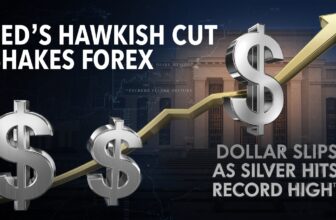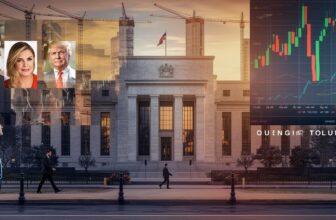
The spectacle of currency valuation is one that captures the attention of traders, economists, and policy-makers alike. The journey of the euro towards parity with the US dollar is a multifaceted narrative that delves into economic dynamics, market psychology, and global influences. Let’s explore the factors driving this trend and its broader implications on the international financial landscape.
The Euro and Dollar: A Brief Overview
The euro, introduced in 1999, stands as a testament to the unification and economic aspirations of European Union members. Over the years, it has fluctuated in value against the US dollar, reflecting the changing tides of economic conditions, policy decisions, and global events.
The US dollar, on the other hand, continues to serve as the world’s primary reserve currency, exuding strength and stability that often makes it the go-to currency during times of uncertainty. As these two currencies jostle on the forex stage, several factors push and pull, influencing their respective valuations.
Factors Pushing the Euro Towards Parity
1. Monetary Policies
Monetary policy divergence plays a critical role in the relative strength of the euro and dollar. The European Central Bank (ECB) has often kept its policies more accommodative to foster economic growth within the eurozone. In recent years, with the US Federal Reserve hinting at tighter monetary policies to manage inflation, the dollar has seen increased demand compared to the euro.
2. Economic Growth Disparities
The pace at which economies recover and grow is pivotal in currency valuation. While the US economy has demonstrated resilience and strong recovery measures post-pandemic, parts of the eurozone have grappled with slower growth, fiscal challenges, and structural economic issues.
3. Political Influences
Political stability and policy decisions also impact currency strength. For instance, clear fiscal policies and consistent economic strategies in the US can enhance dollar confidence. Conversely, political uncertainties, such as Brexit or differences in fiscal priorities among EU countries, might hinder the euro.
4. Global Trade Dynamics
Trade relationships and the state of global trade significantly affect currency movements. The persistent challenges related to supply chains and international trade agreements play into this equation, impacting investor confidence and currency positions.
Economic Implications of Euro-Dollar Parity
Approaching parity with the dollar could manifest in multiple economic outcomes for the eurozone and beyond. From a trade perspective, a weaker euro can bolster European exports by making them more affordable to global buyers, potentially aiding manufacturing and export-driven sectors.
Conversely, the increased cost of importing goods and services, particularly from dollar-denominated markets, could incite inflationary pressures within the eurozone. Companies and consumers might feel the pinch of rising costs, which could ripple through economic activities.
Strategies for Traders in Currency Markets
Best Forex Trading Strategies for Beginners
For those looking to venture into forex trading, especially in volatile markets, adopting the best forex trading strategies for beginners is crucial. It involves understanding market trends, practicing risk management, and employing technical analysis tools to make informed decisions.
Forex Risk Management Strategies
To navigate the ups and downs of forex trading, implementing robust forex risk management strategies is essential. This includes setting stop-loss orders, diversifying trading portfolios, and regularly reviewing and adjusting trading plans based on market conditions.
The Bigger Picture: Global Financial Trends
In the grand scheme, the trajectory of the euro and dollar reflects broader financial and economic trends. As traders and investors assess their options, understanding these shifts could reveal opportunities in related financial realms, such as stock markets or investments in fintech.
Best Financial Planning Strategies
Keeping abreast with the best financial planning strategies when currency fluctuations occur, and global trends shift can protect investments and foster wealth growth.
Impact of Market Conditions on Investments
Market analysts are keenly observing the evolving dynamics in both the forex and stock markets. Watching trends such as stock market crash predictions or identifying best investment strategies for 2025 will be beneficial for navigating upcoming financial landscapes.
Conclusion: Navigating Currency Valuations in 2025
The quest for euro-dollar parity is emblematic of broader economic narratives shaping the world today. As fiscal policies evolve and market sentiments shift, staying informed and agile becomes imperative for those involved in financial markets.
By understanding the myriad factors influencing these two global currencies, traders and investors can better position themselves to leverage these fluctuations, aligning with broader goals such as achieving financial independence or building a resilient investment portfolio.

















